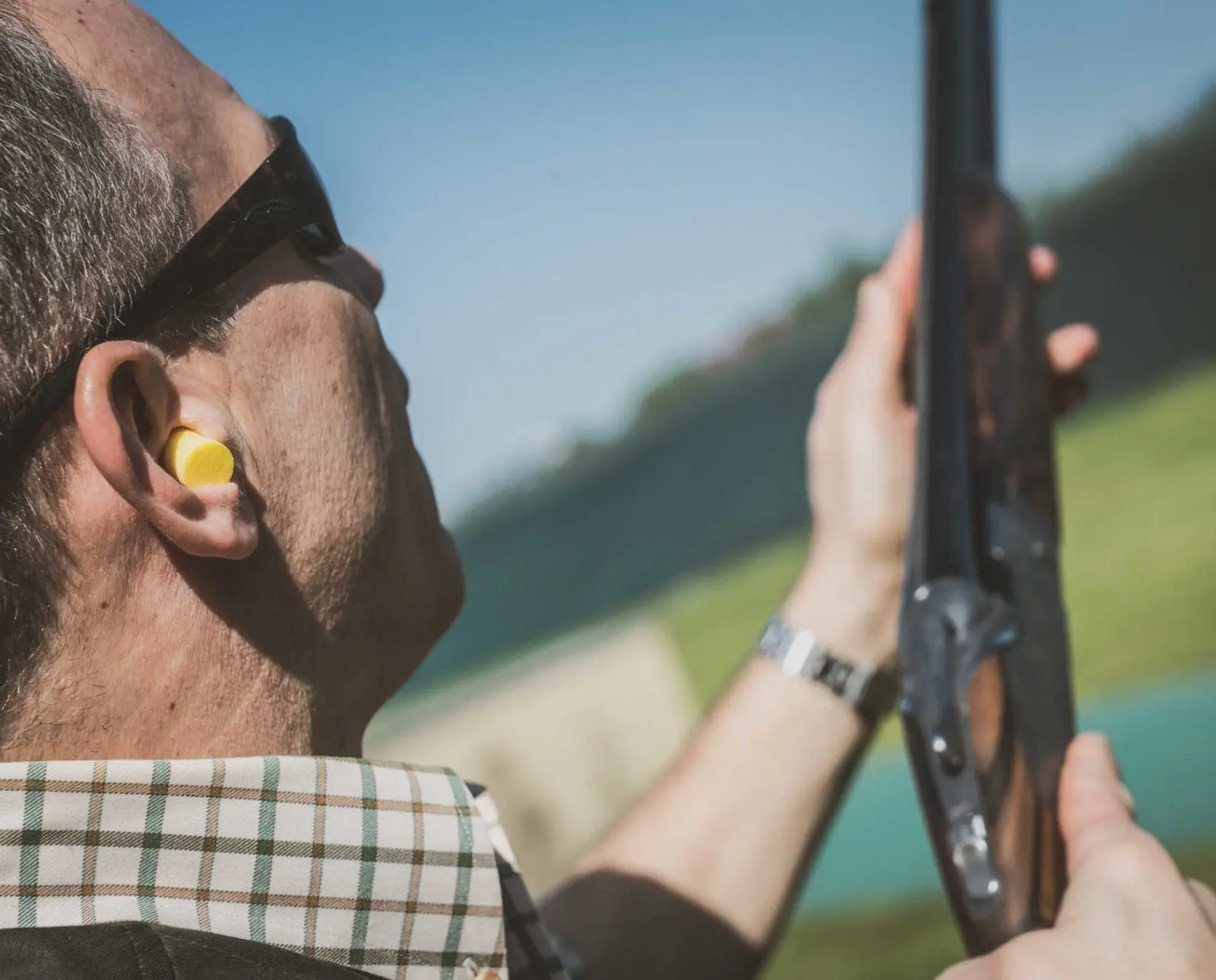Home » Firearms and Shooting » Shotguns » The History and Invention of Skeet Shooting
The History and Invention of Skeet Shooting

A.J. DeRosa, founder of Project Upland, is a New England…
Exploring the world of skeet shooting from past to present
We have all heard the legends of William Harnden Foster sitting around upland campfires and no doubt at some point you may have heard him called the “Father of Skeet.”
Through the years, that has been interpreted as the founder of skeet. But it turns out that even though he had a hand in popularizing skeet shooting, the famous ruffed grouse hunter, artist, and writer from Andover, Mass., did not invent the sport. That distinction is held by Charles Davis, an avid ruffed grouse hunter.
What is skeet shooting?
Skeet shooting is a recreational style of shooting that has been popularized into highly competitive realms. There are two stations which launch clay pigeons across the shooter’s path. One is a high house, the other is the low house. There are eight positions for a shooter to start from and over the course of a round, a player shoots at 25 clay pigeons (a box of shells).
Depending on position, the shooter may receive one target or a “double” (two targets). This style of shooting has only raised the popularity of sporting shotguns like over-and-unders and side-by-sides. Skeet shooting was introduced to the Olympics in 1968, and up until 1996 participation was allowed by by both men and women. However, in 1996 it was controversially limited to men only. That was overturned in 2000 when a female-specific event was created.
The sequence of a skeet shooting round
Skeet shooting positions are located in a half circle. Stations 1 through 7 follow that circular pattern from one end to the other. Station 8, the final station, lies in the center halfway between Stations 1 and 7.
At Station 1, the shooter receives one target from the high house and one from the low house. Targets are launched simultaneously from the high house and low house for a “double.” Shooters traditionally target the high house first. Station 2 is the same sequence as station one.
At the next three Stations (3, 4, and 5), the shooter receives one single from the high house and one from the low house. Stations 6 and 7 are a repeat from the sequence of Stations 1 and 2 (4 targets per station, the last two being a double). In these stations, however, the low house is by tradition shot first, followed by the high house during a double.
At the last station (Station 8), the shooter receives a single target from the high house then a single from the low house. Now this may have sounded like a ridiculous word problem, but the math adds up to a round of 25 clay pigeons and 25 shots.
How was skeet shooting invented?
It is believed that skeet shooting was created to simulate the flushing of ruffed grouse so that a wingshooter could practice in the off season. That makes sense, since Charles Davis the inventor enjoyed ruffed grouse hunting. Sure, there is some truth that practicing with your shotgun in the off season is a good habit to be in. But truth be told, it was more about fun.
Davis, along with his friend, William Foster, created a game they called “Shooting around the clock”. The original game had one house to launch clay pigeons from. But legend goes that when a chicken farm was built next door they had to stop shooting. However in 1923, Foster came up with the idea to add a second house and cut the circle in half. This is the current setup practiced worldwide.
In 1926, Foster realizing the potential of “shooting around the clock” and introduced it to the National Sportsman and Hunting and Fishing magazines. There they ran a contest for a proper name for this new kind of competition shooting. As you would have guessed, the name “skeet” won, and is believed to be derived from the Norwegian word “skyte” which means “shoot.”
The title “Father of Skeet” still seems fitting when we get to the end of this story for the famous William Harden Foster, but the invention lies in the works of Charles Davis. The National Skeet Shooting Association formed in 1928 and in 1970 Foster was named in the Hall of Fame and the rest is history.
A.J. DeRosa, founder of Project Upland, is a New England native with over 35 years of hunting experience across three continents. His passion for upland birds and side-by-side shotguns has taken him around the world, uncovering the stories of people and places connected to the uplands. First published in 2004, he wrote The Urban Deer Complex in 2014 and soon discovered a love for filmmaking, which led to the award-winning Project Upland film series. A.J.'s dedication to wildlife drives his advocacy for conservation policy and habitat funding at both federal and state levels. He serves as Vice Chair of the New Hampshire Fish & Game Commission, giving back to his community. You can often find A.J. and his Wirehaired Pointing Griffon, Grim, hunting in the mountains of New England—or wherever the birds lead them.




Your history and invention of Skeet is in need of a bit of correction.
I will be happy to point out the errors.
Hey Dean, We are always open to input, an on going evolution over here.
One little correction: shooting an even number of targets (2or4) at an even number of stations (8) will not get you to 25 (an uneven #) targets/shells shot. That’s where the “option” comes in. First target missed is shot over. If a shooter has not missed all the way through station 8, the option is now shot at low 8. It’s nice to hit two at low 8 because that means you’ve run 25 straight.